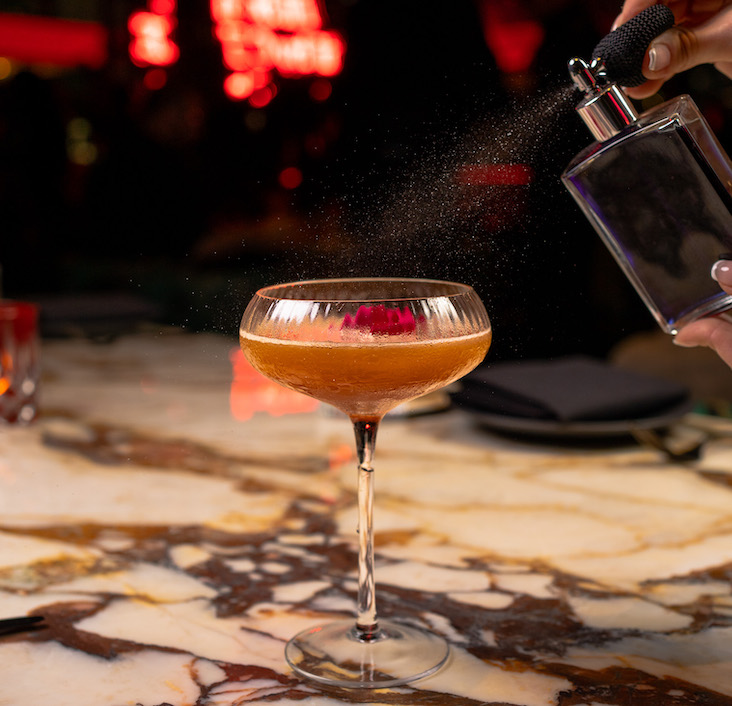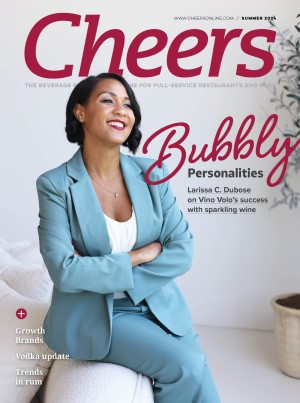RAISING THE BAR ON BEVERAGES
Cheers beverage conference keynoter Dick Rivera, president of Red Lobster, revealed how beverage alcohol helped build a killer restaurant brand.
They may be best known for their fresh-and-salt water seafood extravangazas, but there was a time when the Red Lobster seemed awfully thirsty, according to company president Dick Rivera.
In fact, the company stumbled while under General Mills’ control because beverage alcohol was deemed an awkward category to the company which was home to Betty Crocker and other homey American food icons.
“Red Lobster flattened out because people weren’t drinking with us, they were drinking elsewhere. Casual dining was changing and Red Lobster wasn’t going with it,” Rivera said.
This, despite the fact that since the 700+ unit chain’s inception under Bill Darden in 1968, “cocktails played a role in building business.” Few restaurants provided the opportunities for affordable table service dining then, he said, and bolstering the seafood house’s attraction was the inclusion of cocktail lounges in basic unit design. “From the beginning, we had lounges selling cocktails for 65 cents and beer for 35 cents.”
Part of the reason beverage alcohol played such an important role in Red Lobster’s early days was that it helped establish the emotional connection chains need to make with their customers. “We were about food. We found out by doing research that people came to Red Lobster for a seafood fix. It was a functional need, but not emotional. It was not about fun at a time when others were offering better experiences.”
Rivera also warned attendees not to be complacent about the inevitable legislative battles surrounding beverage alcohol.
While General Mills brought great system controls, terrific brand management, promotional know-how, great food photography, and strong purchasing power (they orchestrated the sourcing of the entire Belizean lobster crop, still in place today), they were unsure of beverage alcohol’s Place in family dining.
As Red Lobster’s novelty wore off and General Mills’s reluctance to commit to comprehensive beverage alcohol programs continued, the chain found it difficult to keep up with the evolving industry, Rivera said. “We convinced ourselves that Red Lobster customers don’t drink.”
MODERN IMAGERY
But the basics for quality beverage service were still in place. “We had good demographics. As people go out to spend more money on food, they are inclined to eat more seafood, especially with an aging population. It’s great to be in casual dining seafood. There is good awareness of us, but not a lot of relevance. There is residual good will towards us, but Red Lobster is not a factor in people’s lives.”
Michael Merriman, California Cafe Restaurant Corp., talked about his operations’ wine selling techniques.
To repair that image, a sense developed that Red Lobster should treat the beverage business seriously.
“We decided we needed to change our focus. Beverages became the redefining of who we are. It wasn’t about revenue and increasing growth, but about changing our focus. We need to push out further with good seafood, but to be about good times now, too. It’s about welcoming people and being thoughtful.
Spirit sales have always been good, even through the years of neglect, especially frozen drinks, Rivera said. “But the bad news we found was that even though Margaritas were top sellers, they weren’t scored well by customers. In fact, we were rated low across the board with our aabeverages.”
The chain decided to step up quality through a series of steps. “We simplified the process. We created dedicated Margarita machines, eliminating steps and improving consistency. We increased variety at the bar, giving people more choices and more brands.” The up-grading is continuing in units even now, he said, and the chain has learned some lessons. They’ve left the proprietary beer business after Red Claw beer underperformed and have gone back to major brands.
Matt Swingos, Swingos on the Lake, Lakewood, Ohio, receives his best indie wine award from Publisher J. Peter Heustis.
Then executives turned to unit décor. “Our restaurants were not too comfortable. We needed to liven them up a bit. We had to think about what position we wanted to play.” After experimenting with various design schemes, Red Lobster’s current prototype includes an open and airy bar area. “People now can dine at the bar and can talk to each other. It’s more inviting and up to date. It is now a great place to have a cocktail.”
Plans are in place to alter 150 units by the end of 2000, just a fraction of the chains. New print ads are being tested in Tampa. “We want to dial up the energy. We are now talking aggressively about happy hour.”
RESULTS ARE IN
Already the percentage of cocktails sold is up, Rivera said. A new commercial called Hot Legs has garnered lots of attention and sales skyrocketed after the new ads. “I was nervous at first, but was pushed by the marketing department and it worked. People are thinking differently about Red Lobster.”
Master Sommelier and Master of Wine Doug Frost put the wine panelists through their paces.
Market structure and concept studies indicate perceptions are changing. “We used to have good functionality, but now we have personality, too. We are starting to see our efforts pay. People now say, ‘They’re updated…more contemporary and current.’ And ‘New Attitude, new people, new look.’
“Our company averages are up 16%, and the remodels are another 20% on top of that. We’re redefining ourselves and we use beverage to get there. People rate you’re concept higher when they have had a cocktail. When you take care of what’s in your four walls, then all will fall into place.”
LEGISLATIVE MOVES
While Red Lobster’s results are the bright side, Rivera warned about the state of beverage alcohol legislation. “The Past President of MADD has said there is no safe blood alcohol level, and for that reason, responsible drinking means no drinking and driving. A Pennsylvania Liquor Control Board ad says ‘Impairment begins with the first drink. Never drink and drive.’ We need to change how we think and what we do. If we go to zero tolerance, it does no one any good. Statistics show that it isn’t until blood alcohol goes up to .14 that traffic fatalities go up.”
Alan Gibson, who ran Uno’s beverage upgrade before moving to Rare, said casual chains have a hard time with wine.
Rivera warned that the difficult future could be made worse by in-fighting among suppliers. ” Spirits people are at war with wine and beer people. But it seems to me that’s not a helpful way to conquer the problems. We have been in denial. We’ve been too narrow. When 40% of the population were smokers, we didn’t want ‘No smoking’ bars. When it went down to 25%, everything shifted.”
“There are ambivalent feelings about alcohol. People want permission to enjoy a cocktail. Drinking is situational. It’s about granting permission. Servers need to suggest a beverage that goes with an entree, for example. What happened with smoking is that first, it was marginalized, then demonized, then denormalized. We need to renormalize drinking.
“There are too many of us who have done nothing for too long. Legislative involvement is necessary to put a business name to the lobbying effort. Take responsibility for where we are, and where we are going.”




